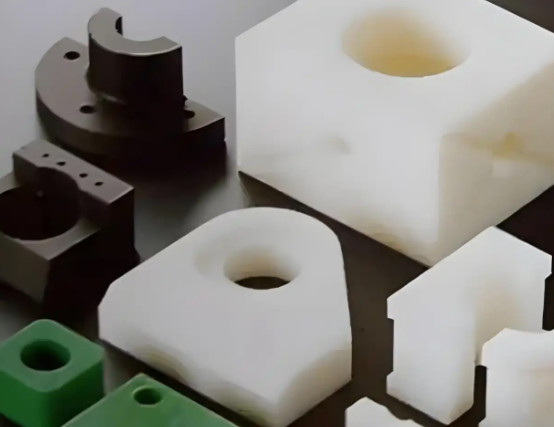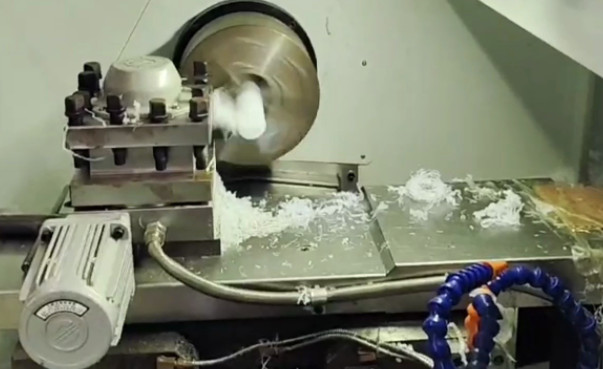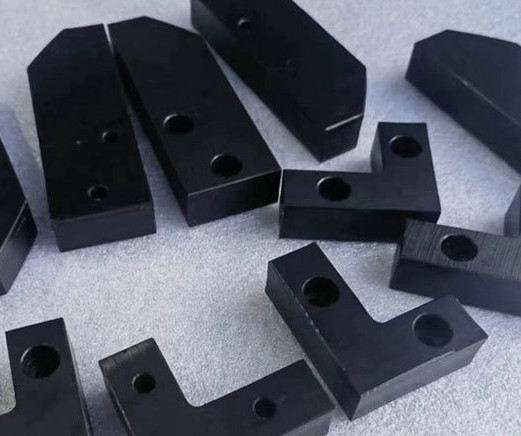Polycarbonate (PC) is a versatile thermoplastic known for its high impact resistance, optical clarity, and dimensional stability. Its machinability makes it a preferred material for precision components in industries like automotive, aerospace, electronics, and medical devices. This guide provides a detailed overview of polycarbonate machining, including types of machining processes, specific techniques, technical parameters, and potential difficulties. The content is structured to offer practical insights for professionals seeking to achieve high-quality results.
Understanding Polycarbonate Material Properties
Polycarbonate is an amorphous thermoplastic with no fixed melting point, softening gradually before melting. Its key properties make it ideal for machining:
- Impact Strength: Up to 250 times stronger than glass and 30 times stronger than acrylic, suitable for high-impact applications.
- Optical Clarity: Transmits approximately 90% of visible light, comparable to glass.
- Thermal Stability: Heat deflection temperature of 145°C at 264 psi, allowing use in elevated temperature environments.
- Dimensional Stability: Low moisture absorption (0.15-0.35%) ensures consistent dimensions during machining.
- Chemical Resistance: Resists oils, greases, and diluted acids, but is susceptible to solvents like acetone.
These properties influence machining approaches, requiring careful parameter control to maintain material integrity.

Types of Polycarbonate Machining Processes
Several machining processes are used to shape polycarbonate, each suited to specific applications and part geometries. Below are the primary methods:
CNC Milling
CNC milling uses computer-controlled rotary cutters to remove material from polycarbonate workpieces. It is ideal for creating complex 2D and 3D shapes with tight tolerances.
- Applications: Automotive lenses, medical device housings, and electronic enclosures.
- Tools: Single-flute or two-flute carbide end mills with polished flutes for clean cuts.
- Parameters:
- Spindle Speed: 8,000-15,000 RPM
- Feed Rate: 50-100 IPM (inches per minute)
- Depth of Cut: 0.01-0.05 inches per pass for thin sheets (≤5 mm); multiple passes for thicker sheets.
CNC Turning
Turning involves rotating the polycarbonate workpiece while a stationary cutting tool shapes it, typically for cylindrical parts.
- Applications: Rods, tubes, and bushings.
- Tools: Carbide-tipped tools with high rake angles to minimize heat buildup.
- Parameters:
- Spindle Speed: 2,000-6,000 RPM
- Feed Rate: 0.002-0.008 inches per revolution
- Cutting Depth: 0.02-0.1 inches per pass
Drilling
Drilling creates holes in polycarbonate using rotary drill bits. It requires careful control to avoid cracking or melting.
- Applications: Fastener holes in panels or structural components.
- Tools: High-speed steel (HSS) or carbide drill bits with 90-118° point angles.
- Parameters:
- Spindle Speed: 1,500-3,000 RPM
- Feed Rate: 0.001-0.004 inches per revolution
- Peck Drilling: 0.05-0.1 inches per peck to clear chips
Laser Cutting
Laser cutting uses a high-powered laser beam to melt or vaporize polycarbonate, suitable for thin sheets and intricate designs.
- Applications: Signage, optical components, and decorative panels.
- Tools: CO2 lasers with 10.6 µm wavelength.
- Parameters:
- Power: 50-150 W
- Speed: 10-50 mm/s
- Frequency: 1,000-5,000 Hz
Waterjet Cutting
Waterjet cutting employs a high-pressure water stream mixed with abrasives to erode material, ideal for thick polycarbonate without heat-affected zones.
- Applications: Large structural components and prototypes.
- Tools: Abrasive waterjet systems with garnet abrasives.
- Parameters:
- Pressure: 50,000-60,000 psi
- Speed: 5-20 mm/min for 10 mm thick sheets
- Nozzle Diameter: 0.03-0.04 inches
Polycarbonate Grades for Machining
Different polycarbonate grades cater to specific machining needs. The table below summarizes common grades and their characteristics:
| Grade | Key Features | Applications |
|---|---|---|
| General-Purpose | High clarity, UV resistance, moderate strength | Lenses, windows, signage |
| Glass-Filled | 10-40% glass fibers, high stiffness, strength | Structural components, industrial parts |
| Optical-Grade | Superior clarity, minimal imperfections | Optical lenses, medical devices |
| UV-Stabilized | Resists yellowing from UV exposure | Outdoor panels, greenhouse covers |
Machining Process Steps
Effective polycarbonate machining follows a systematic process to ensure precision and quality. The steps include:
- Design Review: Analyze CAD models to confirm compatibility with polycarbonate properties.
- CAM Programming: Generate toolpaths using CAM software, specifying speeds, feeds, and depths.
- Material Setup: Secure polycarbonate sheets or rods using clamps or vacuum hold-downs to minimize vibration.
- Tool Selection: Choose sharp, carbide-tipped or HSS tools designed for plastics.
- Machine Setup: Configure CNC machine settings per CAM program requirements.
- Machining Execution: Perform milling, turning, or cutting with continuous chip evacuation.
- Finishing: Apply polishing or coating to achieve desired surface quality.
- Inspection: Verify dimensions and tolerances using calipers, CMM, or optical comparators.

Difficulties in Polycarbonate Machining
While polycarbonate is highly machinable, certain difficulties require attention to achieve optimal results:
- Heat Sensitivity: Excessive heat can cause melting or deformation. Use low cutting speeds (e.g., 8,000 RPM for milling) and non-aromatic, water-miscible coolants to dissipate heat.
- Stringy Chips: Polycarbonate produces long, stringy chips that can clog tools. Employ compressed air or vacuum systems for effective chip removal.
- Scratching: The material’s surface is prone to scratches. Use polished tools and apply protective coatings post-machining.
- Warping: Large or thin sheets may warp under clamping pressure or material weight. Use robust fixturing and multiple milling passes for thick sheets (>10 mm).
- Stress Cracking: High tensile loads during machining can induce stress cracking. Annealing before machining reduces internal stresses.
Tool Selection and Parameters
Proper tool selection and machining parameters are critical for quality outcomes. The table below outlines recommended tools and settings for key processes:
| Process | Tool Type | Spindle Speed (RPM) | Feed Rate | Depth of Cut |
|---|---|---|---|---|
| Milling | Single-flute carbide end mill | 8,000-15,000 | 50-100 IPM | 0.01-0.05 inches |
| Turning | Carbide-tipped tool | 2,000-6,000 | 0.002-0.008 in/rev | 0.02-0.1 inches |
| Drilling | HSS or carbide drill bit | 1,500-3,000 | 0.001-0.004 in/rev | 0.05-0.1 inches per peck |
Finishing Techniques for Polycarbonate
Post-machining finishing enhances surface quality and functionality:
- Vapor Polishing: Uses solvent vapors to smooth surfaces, restoring optical clarity. Requires careful control to avoid over-exposure.
- Buffing: Employs a cotton polishing wheel with plastic-specific polishing paste at 10,000-15,000 RPM for high-gloss finishes.
- Sandpaper Polishing: Uses progressively finer grits (400 to 2000) followed by a polishing compound for manual finishing.
- Coatings: Anti-scratch or UV-resistant coatings improve durability and longevity.
Applications of Machined Polycarbonate Parts
Machined polycarbonate parts are used across various industries due to their durability and clarity:
- Automotive: Headlight lenses, turn signal covers, and interior panels.
- Aerospace: Canopies, windows, and instrument covers.
- Medical: Incubator housings, dialysis machine components, and protective shields.
- Electronics: Display screens, insulators, and enclosures.
- Construction: Greenhouse panels, skylights, and safety glazing.
Best Practices for Polycarbonate Machining
To achieve high-quality results, follow these best practices:
- Use sharp, polished tools to minimize heat and surface damage.
- Employ climb milling to reduce workpiece lift and improve edge finish.
- Implement peck drilling for deep holes to prevent chip clogging.
- Use non-aromatic coolants or compressed air to manage heat and chips.
- Anneal polycarbonate before machining to reduce stress cracking risks.
- Verify toolpaths in CAM software to avoid excessive material removal.
Conclusion
Polycarbonate machining is a precise and versatile process that leverages the material’s unique properties to produce high-quality components. By understanding the types of machining processes, selecting appropriate tools and parameters, and addressing difficulties like heat sensitivity and chip management, manufacturers can achieve consistent results. This guide provides a structured, technical framework to optimize polycarbonate machining for various industrial applications.
FAQs About Polycarbonate
What is polycarbonate?
Polycarbonate (often abbreviated as PC) is a tough, transparent thermoplastic polymer known for its exceptional strength, impact resistance, and optical clarity. It belongs to the family of carbonate-linked polymers and is valued for its versatility in various industrial, commercial, and consumer applications.
What are the key properties of polycarbonate?
Polycarbonate exhibits several notable properties:
High impact resistance: It is virtually unbreakable under normal conditions, making it much stronger than glass or acrylic.
Optical clarity: Transparent grades transmit light similarly to glass (up to 90% light transmission).
Heat resistance: It can withstand moderate temperatures (typically up to 120–130°C / 248–266°F) without deforming.
Dimensional stability: Maintains shape under temperature changes and mechanical stress.
Electrical insulation: Good dielectric properties, useful in electronics.
Machinability: Easy to cut, drill, bend, or mold into complex shapes.
What are the limitations of polycarbonate?
Susceptible to scratching (softer than glass; may require scratch-resistant coatings).
Can absorb moisture, which may affect molding processes if not dried properly.
Lower chemical resistance compared to some plastics (e.g., may react with strong acids or solvents).
